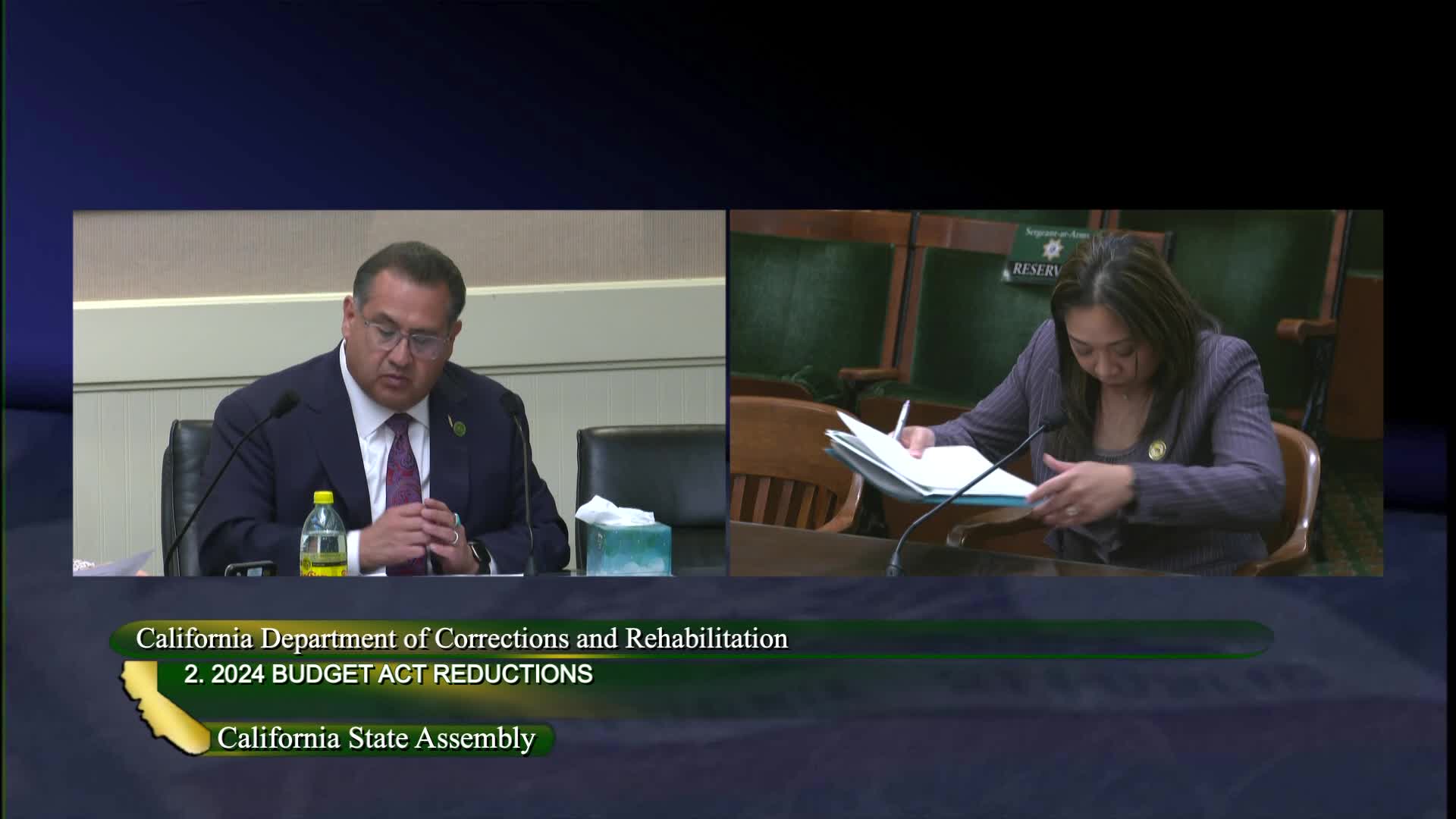California Department of Corrections plans $454M cooling system pilot for prisons
March 03, 2025 | California State Assembly, House, Legislative, California
Thanks to Scribe from Workplace AI and Family Portal , all articles about California are free for you to enjoy throughout 2025!

This article was created by AI using a video recording of the meeting. It summarizes the key points discussed, but for full details and context, please refer to the video of the full meeting. Link to Full Meeting
Orlando Sanchez from the Legislative Analyst's Office opened the discussion by highlighting the budget's assumption of a 10% savings target across state departments, with CDCR tasked to find $392 million in savings. However, as the proposed budget for 2025-2026 was presented, it became clear that the anticipated savings would be lower than expected, now estimated at 2.4% of the general fund. This reduction raised concerns about the potential impact on rehabilitation and reentry programs, which lawmakers emphasized must remain protected.
Cynthia Mendonza, Deputy Director of the CDCR Office of Fiscal Services, elaborated on the department's efforts to identify reductions without compromising critical services. She noted that while the CDCR had already implemented significant cuts, including the closure of four prisons, the ongoing need for healthcare and rehabilitation services complicated further reductions. The department has faced rising operational costs, particularly in healthcare, which constitutes a large portion of its budget.
The conversation turned to the implications of these budget cuts, particularly regarding service levels. Sanchez pointed out that some savings could lead to delays in services, affecting the quality of life for those incarcerated. He urged lawmakers to scrutinize the proposed savings closely to ensure they align with legislative priorities.
As the meeting progressed, Dwayne Reeder, Deputy Director of California Correctional Healthcare Services, acknowledged the challenges of maintaining healthcare standards amid budget constraints. He emphasized the need for ongoing efficiencies and the importance of bringing more services in-house to reduce costs.
The subcommittee members expressed their concerns about the CDCR's ability to meet its savings targets, especially given the state's growing budget deficit. They pressed for clarity on how the department plans to achieve these goals while ensuring the safety and well-being of both staff and inmates.
In a notable exchange, lawmakers discussed the historical context of CDCR's budget, noting that while the proportion of the general fund allocated to corrections has decreased, the overall spending has increased significantly due to investments in healthcare and rehabilitation. This shift reflects a broader commitment to reforming the correctional system, but it also raises questions about sustainability in the face of fiscal challenges.
As the meeting concluded, the urgency of the situation was palpable. Lawmakers left with a clearer understanding of the complexities surrounding the CDCR budget, the necessity for continued oversight, and the pressing need for innovative solutions to navigate the financial landscape ahead. The discussions underscored a critical balancing act: achieving fiscal responsibility while upholding the values of rehabilitation and public safety in California's correctional system.
Converted from Assembly Budget Subcommittee No. 6 on Public Safety (1) meeting on March 03, 2025
Link to Full Meeting
Comments
View full meeting
This article is based on a recent meeting—watch the full video and explore the complete transcript for deeper insights into the discussion.
View full meeting